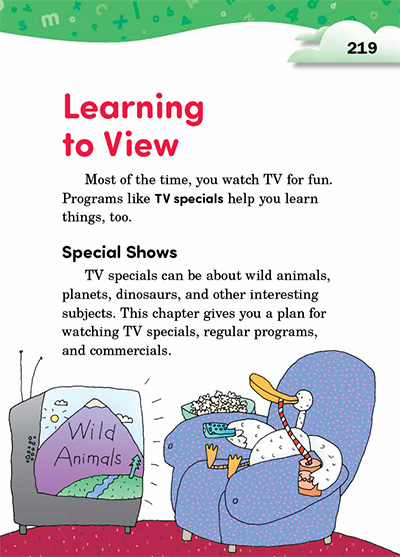Page 219 from

Start-Up Activity
Ask students to name shows they have recently watched on TV. Were they real-life or pretend? Pretend shows like sitcoms and cartoons tell make-believe stories. These shows are meant to entertain us. Real-life shows like news programs show real people, places, things, and events. These shows are meant to inform us.
Choose a documentary for your students to view so that they can practice the tips from this chapter.
Think About It
“All television is educational television. The question is: what is it teaching?”
—Nicholas Johnson

Start-Up Activity
Ask students to name shows they have recently watched on TV. Were they real-life or pretend? Pretend shows like sitcoms and cartoons tell make-believe stories. These shows are meant to entertain us. Real-life shows like news programs show real people, places, things, and events. These shows are meant to inform us.
Choose a documentary for your students to view so that they can practice the tips from this chapter.
Think About It
“All television is educational television. The question is: what is it teaching?”
—Nicholas Johnson